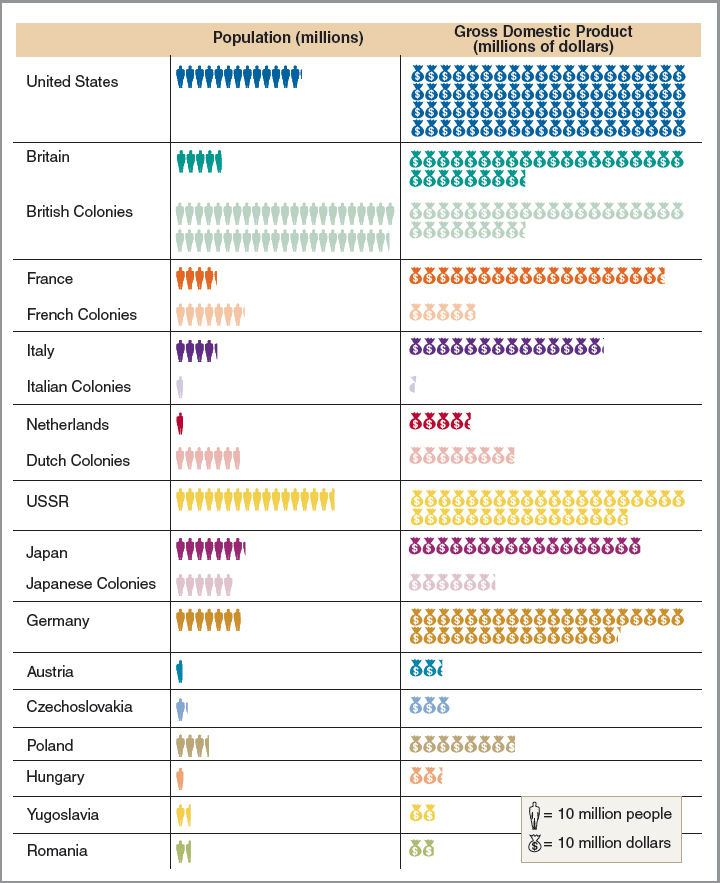Reaction and Recession
Printed Page 736
Emboldened by their defeat of the court-packing plan, Republicans and southern Democrats rallied around their common conservatism to obstruct additional reforms. Former president Herbert Hoover proclaimed that the New Deal was the “repudiation of Democracy” and that “the Republican Party alone [was] the guardian of ... the charter of freedom.” Democrats’ arguments over whether the New Deal needed to be expanded — and if so, how — undermined the consensus among reformers and sparked antagonism between Congress and the White House. The ominous rise of belligerent regimes in Germany, Italy, and Japan also slowed reform.
Roosevelt himself favored slowing the pace of the New Deal. He believed that existing New Deal measures had steadily boosted the economy and largely eliminated the depression crisis. In fact, the gross national product in 1937 briefly equaled the 1929 level before dropping lower for the rest of the decade. Unemployment declined to 14 percent in 1937 but quickly spiked upward and stayed higher until 1940. Roosevelt’s unwarranted optimism about the economic recovery persuaded him that additional deficit spending by the federal government was no longer necessary.
Roosevelt’s optimism failed to consider the stubborn realities of unemployment and poverty, and the reduction in deficit spending reversed the improving economy. Even at the high-water mark of recovery in the summer of 1937, seven million people lacked jobs. In the next few months, national income and production slipped so steeply that almost two-thirds of the economic gains since 1933 were lost by June 1938.
This economic reversal hurt the New Deal politically. Conservatives argued that this recession proved that New Deal measures produced only an illusion of progress. The way to weather the recession was to tax and spend less as well as to wait for the natural laws of supply and demand to restore prosperity. Many New Dealers insisted instead that the continuing depression demanded that Roosevelt revive federal spending and redouble efforts to stimulate the economy. In 1938, Congress heeded such pleas and enacted a massive new program of federal spending.
The recession scare of 1937–1938 taught the president the lesson that economic growth had to be carefully nurtured. The English economist John Maynard Keynes argued that only government intervention could pump enough money into the economy to restore prosperity, a concept that became known as Keynesian economics. Roosevelt never had the inclination or time to master Keynesian thought. But in a commonsense way, he understood that escape from the depression required a plan for large-scale spending to alleviate distress and stimulate economic growth (Figure 24.2).

